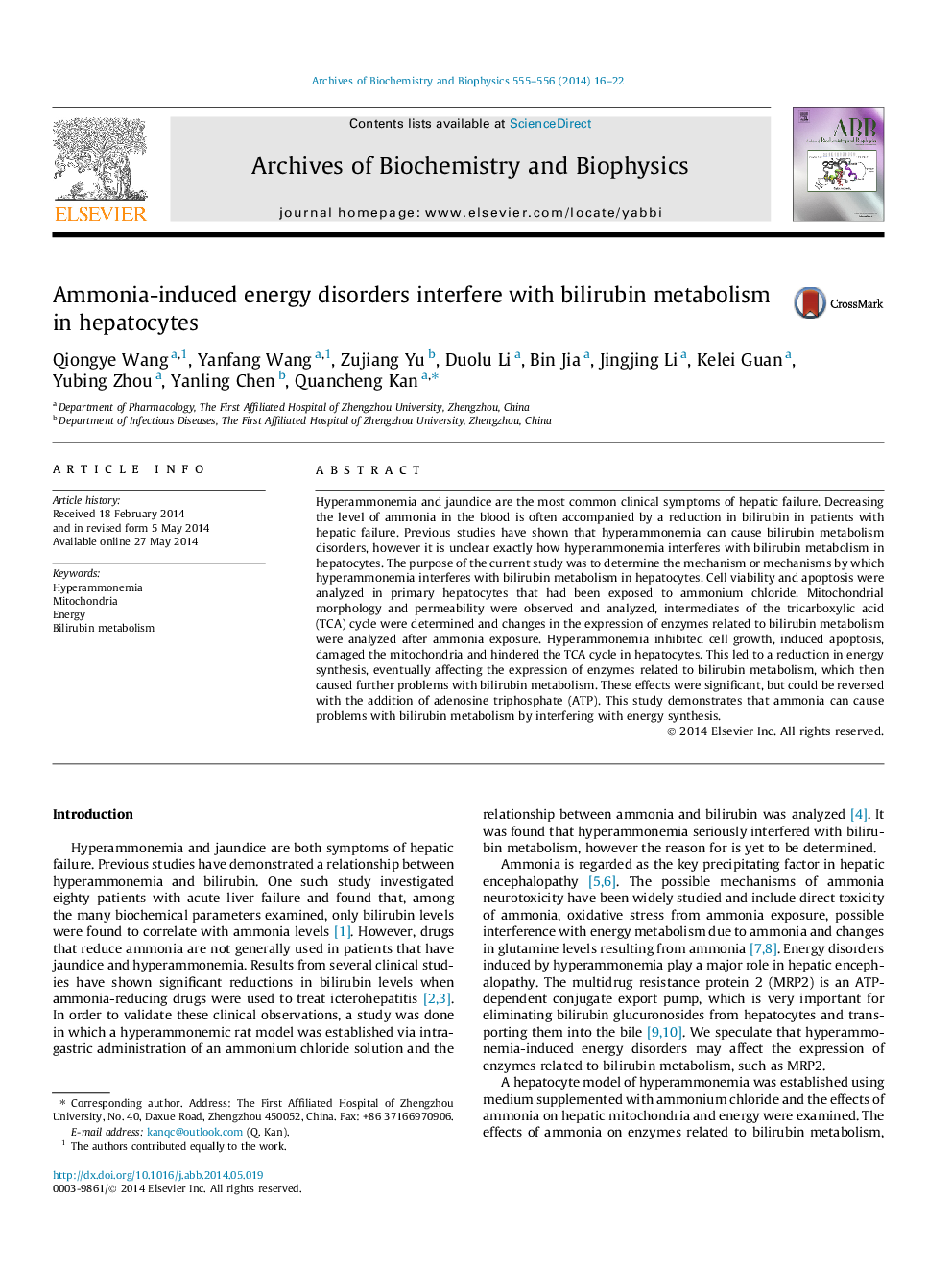| Article ID | Journal | Published Year | Pages | File Type |
|---|---|---|---|---|
| 1925142 | Archives of Biochemistry and Biophysics | 2014 | 7 Pages |
•Hyperammonemia damages liver mitochondria by inducing mPTP.•Mitochondrial dysfunction caused by ammonia affects energy synthesis in hepatocytes.•Hyperammonemia-induced energy disorders affect bilirubin metabolism in hepatocytes.
Hyperammonemia and jaundice are the most common clinical symptoms of hepatic failure. Decreasing the level of ammonia in the blood is often accompanied by a reduction in bilirubin in patients with hepatic failure. Previous studies have shown that hyperammonemia can cause bilirubin metabolism disorders, however it is unclear exactly how hyperammonemia interferes with bilirubin metabolism in hepatocytes. The purpose of the current study was to determine the mechanism or mechanisms by which hyperammonemia interferes with bilirubin metabolism in hepatocytes. Cell viability and apoptosis were analyzed in primary hepatocytes that had been exposed to ammonium chloride. Mitochondrial morphology and permeability were observed and analyzed, intermediates of the tricarboxylic acid (TCA) cycle were determined and changes in the expression of enzymes related to bilirubin metabolism were analyzed after ammonia exposure. Hyperammonemia inhibited cell growth, induced apoptosis, damaged the mitochondria and hindered the TCA cycle in hepatocytes. This led to a reduction in energy synthesis, eventually affecting the expression of enzymes related to bilirubin metabolism, which then caused further problems with bilirubin metabolism. These effects were significant, but could be reversed with the addition of adenosine triphosphate (ATP). This study demonstrates that ammonia can cause problems with bilirubin metabolism by interfering with energy synthesis.
